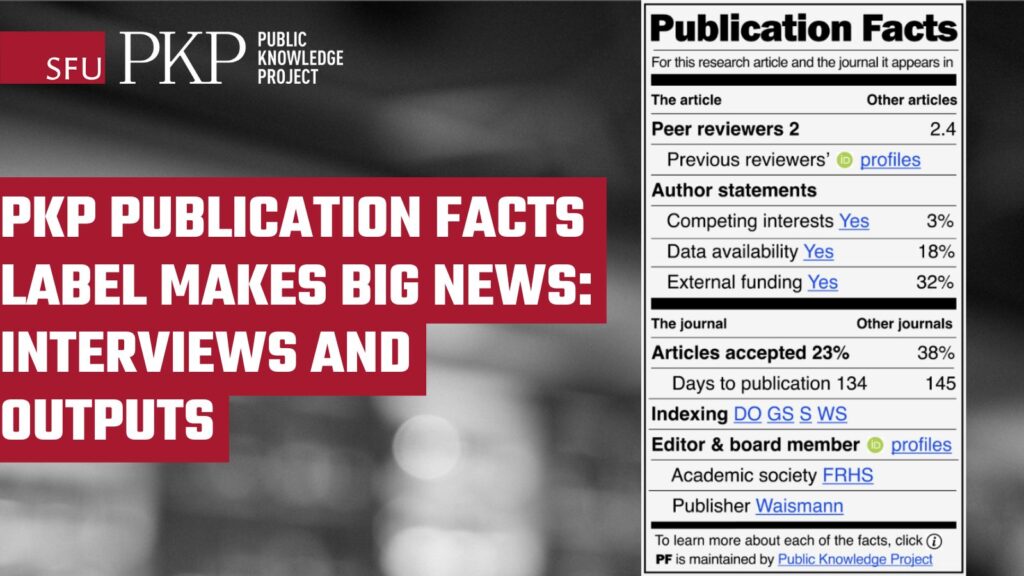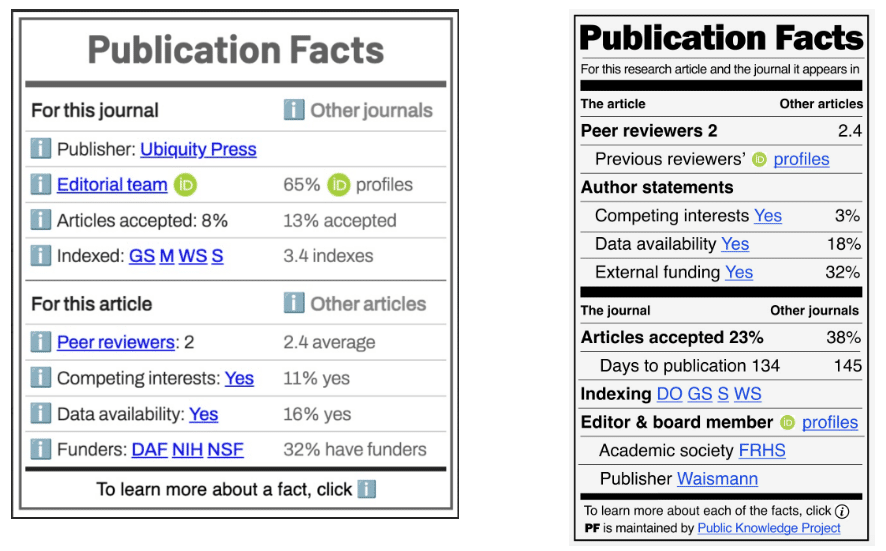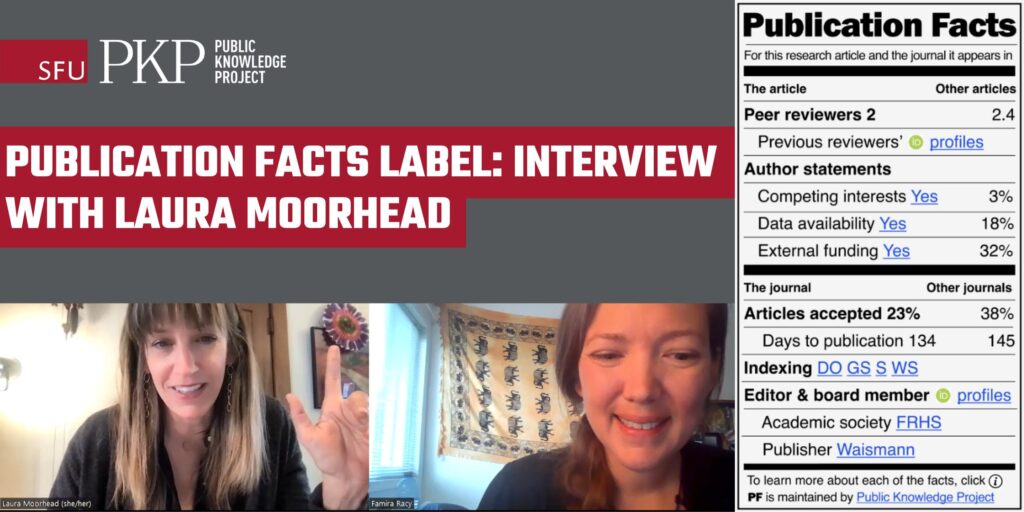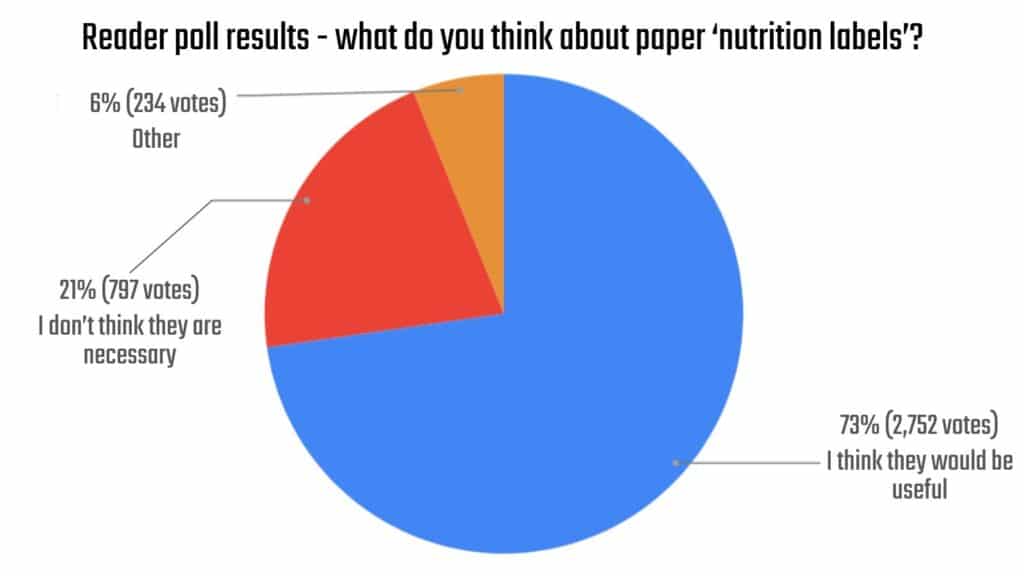
The Publication Facts Label (PFL) will be used to bring together information about article and journal scholarly publishing standards through verification, and to communicate that verification to the public.
This post contains an interview with project partner Laura Moorhead, as well as a case study published in Learned Publishing, and two outputs at Nature: an interview with PKP Founder John Willinsky in Nature Index, and the Daily Briefing “Question of the Week” with poll results.
Public access, and research integrity, are at the heart of the Publication Facts Label (PFL), a PKP initiative aimed at opening conversations about industry-wide standards, and serving as a go-to checkpoint for assessing journal and publication integrity.
The PFL is part of the 5-Point Journal Integrity Initiative (JII): A New Standard for Public Access to Research. The label is a plug-in in the form of an information modal (or pop-up) that is similar in conception to the Nutrition Facts Label. Researchers, journalists, and the general public will be able to use the PFL to learn about:
- the article’s peer-reviewers;
- the article’s author statements (i.e., competing interests, data availability, external funding);
- the journal’s article acceptance rate, days to publication, indexing, and editorial board;
- comparisons to other articles and journals.
Below is a snapshot of the PFL’s evolution following intensive focus group reviews and revisions.

We are moving forward in the age of scholarship and research for the greater public good. At the same time, we, at PKP, feel a responsibility to develop tools to inform, educate, and facilitate the public in assessing publication integrity. Why should we feel this responsibility?
One example is the potential mis-labeling of journals and publications as “predatory” in the wake of the open access movement. If scholars and researchers can mis-identify publications as predatory, then it makes sense that the public, including students, science communicators and journalists can, too.
Interview with Laura Moorhead
To help illuminate the JII, and how the PFL could influence professions like journalism, PKP interviewed project partner Laura Moorhead, professor at San Francisco State University’s Journalism Department. Laura commented on one major reason why the PFL is needed:
First you need access, but then you need to somehow judge what your your accessing, and what you’re looking at. And I think with so much being available online, there is the question of what is accurate, what’s incorrect, what’s misinformation, and how do you gauge what you’re looking at. And that’s where I think this project, and in particular the label, comes into play.

Case Study in Learned Publishers
To further share the PFL conception and rationale with the scholarly publishing community, John Willinsky and Daniel Pimentel had their case study, The Publication Facts Label: A public and professional guide for research articles, published in the Association of Learned and Professional Society Publishers’ journal of Learned Publishers.
Two key takeaways in the article are that, beyond the goals already outlined, the goals include (1) “to educate readers about the standards that set scholarly publishing apart on the very trustworthiness of the information,” and that (2) “the larger goal is to explore whether there might be interest and appetite for the application of such a device across scholarly publishers and platforms.”
For these goals to be met, the project creators are calling for an organization to bring together publishers to set standards for the PFL in the future. Crossref, ORCID, and DOAJ are already involved at an early stage as a first step in this direction.
Researchers want a ‘nutrition label’ for academic paper facts — Nature Index
As John put it,
Unlike the nutrition-facts label, which was mandated by the US government, the publication-facts label is the result of voluntary concern about research integrity in the publishing industry.
This interview with John Willinsky, published in Nature Index, covers questions such as: why have the PFL, how was the label created, how is the label being tested, and how journals would be compelled to use the label.
Nature Daily Briefing “Question of the Week” Reader Poll Results
Nature’s interest in the PFL does not stop at interviewing John — they also wanted to know what their readership thought about “paper nutrition labels.” More than 3000 people responded to the reader poll, with results indicating a vast majority (73%) think the PFL would be useful.
The poll results came with some examples of why readers voted the way they did, its usefulness, what should be included, some concerns, and why they thought it might not be necessary.

Stay tuned to PKP’s News Blog to get updates on the JII and the PFL. Please consider engaging with PKP’s social media channels to share your interest in, support of, or concerns with the PFL using the hashtag #PFLabel.
